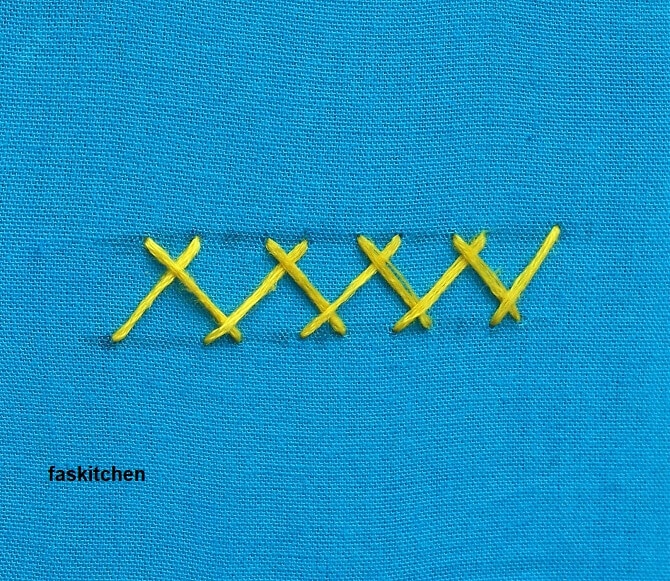Herringbone Stitch is a stitch which is a base for many other stitches. It runs diagonally across the lines and is pretty simple to work with. Like the parallel running stitch, lots of designs can be made with this stitch.
This is also known as Mossoul stitch, Plaited stitch or as Catch stitch. It is not as the Herringbone as it resembles the spine of a herring fish.
WHAT YOU WILL NEED?
- Any fabric.
- Embroidery hoop, 15cm (6″) (Bigger if you are working on a larger design) ( You can purchase a set of 6 hoops from Amazon for your basic needs.)
- Tapestry needle
- Embroidery thread (You can buy this pack of 36 shades of the DMC embroidery floss.)
How many strands of floss do you need for making the herringbone stitch?
You can use all 6 strands of the floss. But if you are working on a finer design, then start with 2 strands of floss and increase the number of strands according to your design. I have used all 6 strands of floss for this tutorial
Step by Step Pictorial Process of making the herringbone stitch
1. Start by bringing the thread out at point A.
2. Pull the thread up and insert the needle at point B. Without pulling the thread down, push through at point C. Pull the thread up.
3. Again, insert at point D and bring out at point E like shown above.
4. Continue working on the pattern in a similar fashion by inserting at point F and bringing out at point G.
5. Work till the end of the design and take the needle down and secure with a knot.
Tips for working the catch stitch
- It is difficult to hide lines with this stitch. I have drawn lines for easier understanding. As you master this stitch, avoid marking the lines.
What is the plaited stitch used for?
- This is a base for many more variations. You can find them coming in the future on the blog.
- It can be used as a filling for flowers, leaves, stems, etc.
More stitches tutorials:
- Stem Stitch
- Chain Stitch
- Running Stitch
- French Knot
- Lazy Daisy
- Back Stitch
- Cable Chain Stitch
- Fly Stitch
- Bullion Knot
- Woven Trellis Stitch
- Long And Short Stitch
Check out the video tutorial below
So until next time,
Keep Stitching,
Fareeha
Pin this image for later reference:






Leave a Reply